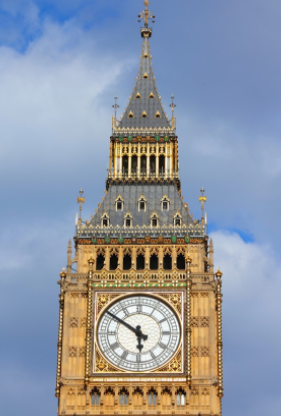DEFIANTLY low-tech yet accurate to the second, Big Ben is having its 150th birthday tomorrow, its Victorian chimes carrying the sound of Britain into the 21st Century.
It’s a birthday the world can share in. The peals of London’s favorite clock are carried globally by BBC radio, and its 96-meter high tower, roughly 16 stories, is the city’s most famous landmark.
But getting inside and seeing Big Ben, the sonorous main bell that gives its name to the whole contraption, isn’t easy. Security measures mean few are granted admission, and there’s no elevator, so those who are escorted in must climb 334 winding limestone stairs.
Catherine Moss, who took journalists on a pre-anniversary tour, said that in one year as a Big Ben guide, she had climbed the height of Everest three times over.
No special events are planned, aside from an exhibition at nearby Portcullis House, the nearby parliamentary office complex, due to open on September 19.
Although the tan-colored tower above the Houses of Parliament is covered in a riot of gilt crowns, sculpted masonry and coats of arms, the interior looks functional. The 4.2-meter long minute hand casts a faint shadow over the pale white glass of the dial. The 5-ton clock mechanism is wound three times a week. In the age of atomic clocks, its near-perfect time is regulated by heavy old pennies laid on or removed from the pendulum.
The chimes, supposedly based on four notes from Handel’s “Messiah,” ring out every quarter hour. The bongs of Big Ben are heard every hour.
It is rare for the clock to go mute. But wars and accidents happen. Initial construction was one disaster after another, and in 1916 the chimes were stopped for two years lest they guide German bomber zeppelins to the parliament building.


